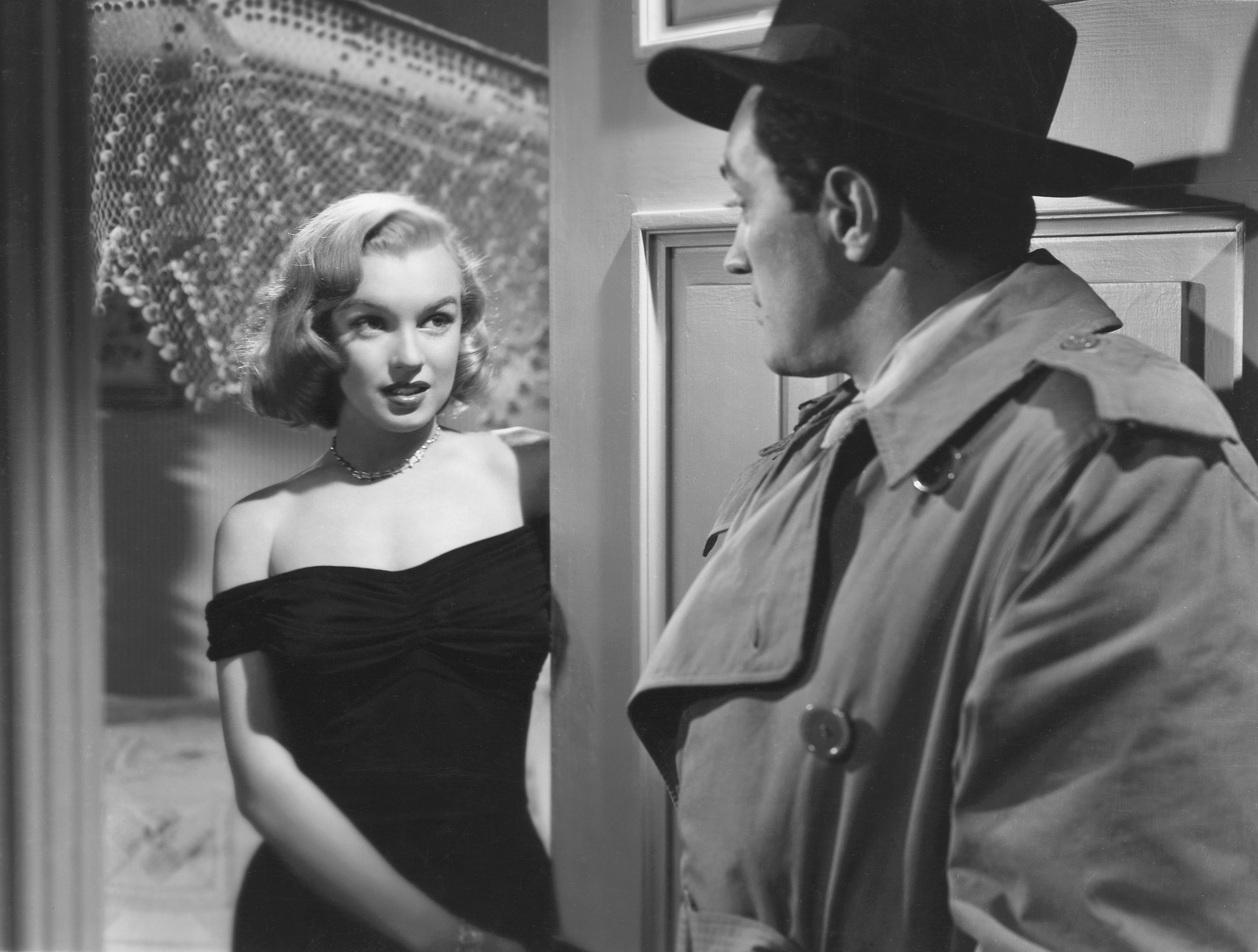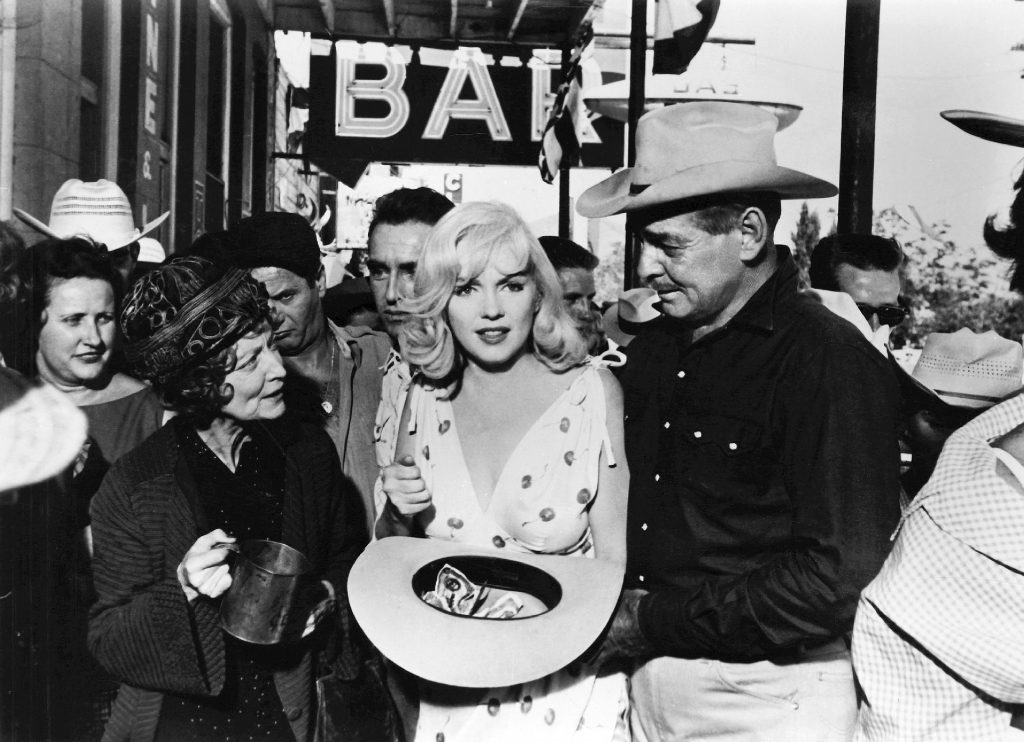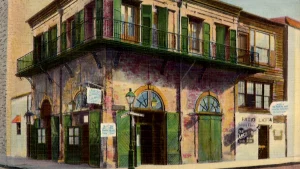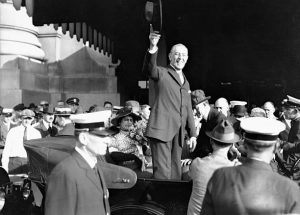Dear Diary: I’ve always been afraid of bees. Now I’m dreaming about them! Great big bumblebees with furry backs. I’m sure they are symbols for something and I am persevering to understand. They flew in a squadron across a meadow. I was hiding in the goldenrod, my feet bound in yellow silk like a Chinese whore’s.1
Her family knew her as Norma Jean Mortenson, a classic hometown girl born on June 1, 1926 in Los Angeles, California, but the world knew her by another name. Perhaps you’ve heard of her: Miss Marilyn Monroe. Never having known her father, Norma Jean was forced to grow up so that she could overcome the obstacles of living in an unstable household. Her mother, Gladys Baker, was incapable of taking care of Norma Jean due to her development of psychiatric problems that resulted in her admission into a mental institution. Unfortunately, this meant that her daughter would have to spend most of her childhood locked up in the confines of the American foster care system battling the inability to enjoy normal childhood experiences and defending herself against countless episodes of sexual assault. For Norma, there was really only one option for her to escape the tortures of her childhood. For this reason, at the age of sixteen, she got married to then-boyfriend Jimmy Dougherty on June 19, 1942. As a merchant marine, Dougherty was sent overseas, and to compensate for the absence of her new husband, Norma found employment as a worker in a nearby factory in Van Nuys, California. Little did she know that this decision would be the one that would change her life forever. While on the job, she managed to earn the attention of David Conover, a photographer sent to the factory by famed actor and army veteran, later President Ronald Reagan, who instructed Conover to capture images of “Women in War Work.” The publication of those pictures in the June 1945 issue of Yank Magazine served as the stepping stone for a life that not even Norma was unsure would play out in her favor; but given the lack of better alternatives, it was a step that she was more than willing to take. Luckily for her, the pictures proved to be a smashing success, and with that newfound fame, she colored her hair platinum blonde and changed her name to Marilyn Monroe.
With a change in direction came new changes in her life, and by the mid-1950’s Marilyn had rose to stardom, tackling top blockbuster films and capturing the attention and hearts of every man, woman, and child in America. In a 1973 biographical profile entitled Marilyn published by American Novelist, Norman Mailer, he depicted the blonde bombshell as being, on one hand, an “angel of sex,” while still possessing the abilities of being “gorgeous, forgiving, humorous, compliant and tender.” He continued by describing her as being an “angel of cinema” and a “presence” on stage.2 It is no surprise that like thousands of other Americans, Mailer was captured by the phenomenon that was Marilyn Monroe. Her charm and iconic good looks served as a distinctive perception of American ideals during this time, and Marilyn was well aware of the gravity of her impact in modeling and performing on the big screen. This is shown in how she often quotes that she “had belonged to the public and to the world” and “had never belonged to anyone else.”3 This realization of what her fame and recognition had brought her imposed a realization that with these opportunities came compromises, those of which would begin to take a serious toll on the American Sweetheart later in her career.
Due to her rapid increase in stardom, Monroe was persuaded to adapt to the changes that came with the life of a popular cultural icon and by doing so she decided to leave her past behind, divorcing her husband, and marrying baseball star Joe DiMaggio in 1954. While her fame came as a bit of a surprise, Monroe made it a priority to ensure that she did not neglect her priorities, and so she contributed as her part to the war effort, by volunteering at the United Service Organization, providing entertainment for soldiers overseas in Korea.4

In doing so, not only did her actions help to build her image, but it helped to showcase her numerous talents, which later proved useful in securing her a role in numerous films and magazine publications upon her return. She showcased her talents in movies such as Monkey Business, Gentlemen Prefer Blondes and How to Marry a Millionaire as well as the opportunity to grace the cover of Playboy magazine.5 Her involvement in the war guaranteed Monroe the opportunities that she had always dreamed about. Her identity remained conflicted between two different personas, “Monroe as a Celebrity,” with her famous blonde hair and hourglass figure, and “Monroe as the All-American Girl Back Home,” cherishing her fond memories of sweethearts, sisters, mothers, home-cooked meals, and any number of personal memories of life as a civilian.6 This battle between who she was portrayed to be and who she actually was proved to create quite a challenge for Monroe, who kept battling the need to be closer to who she actually wanted to be. Her instantaneous rise to stardom left Monroe in a position of complete loss and loneliness. An excerpt of Marilyn Monroe’s diary, from the period of shooting the iconic subway scene in Monkey Business, reveals her conflicting emotions during the height of her career, stating that,
I hate the way the bellboys walk by me, speaking in muffled tones. Sometimes I appear in the antique wooden mirror in the lobby: a maid, cleaning the glass in slow circles, notices a sad blonde in the reflection. Turning, she sees no one is there. Late at night in the hallways.7
While Marilyn tried to portray the lovable and beautiful woman that her fame endorsed, deep inside she was battling emotions that were quite the contrary to her character.
Due to this constant battle of emotions, Marilyn Monroe was forced to resort to various medications to control her frequent episodes of insomnia, depression, and bipolar disorder. Due to her constant traveling and increase in fame, Marilyn developed psychological conditions that deprived her of portraying the star that she was expected to be. For this reason, towards the end of her career, it was discovered that she had been prescribed drugs such as barbiturates, psychoactive drugs, and amphetamine to help her combat and control her condition. Unfortunately, on August 5, 1962, Marilyn Monroe was found dead in her home in Brentwood, Los Angeles, California. Later, toxicology reports had revealed that she had passed away from a drug overdose brought on by the consumption of barbiturates that had been prescribed to her mixed with lethal concentrations of other drugs such as pentobarbital and chloral hydrate.8 All these drugs mixed, creating a cocktail that would lead to the unfortunate death of one of America’s favorite superstars. While the circumstances of her death may still be up for debate, it is clear that the result of this case was no more than another tragic story of another Hollywood star who was overwhelmed by the realities of fame and fortune and took it upon herself to come up with a solution to rid her problems from the world.

Marilyn Monroe is one of the most iconic women in American History, but her story is almost forgotten. Even though she may be considered one of the most photographed women ever, having both her personal and professional life turned into a highly dramatic narrative over the period of her career, her life as an adored and idolized superstar proved to be nothing but a rollercoaster, transforming her dreams of being a successful Hollywood star and escaping her childhood misfortunes into living a lie that was worse than she had imagined. While Marilyn Monroe remains an important figure in the eyes of the American public, it is important to note that her success came at a great expense, costing her her life and her happiness. A simple girl from Los Angeles California had the dreams of making it big in Hollywood, living the life of the rich and famous, but little did she know that the place she had always fantasized would be the farthest thing from what she had imagined. This was the story of that simple “All-American Home Girl” Norma Jean, but the world would rather call her by her true name, Miss Marilyn Monroe.
- Dale M. Kushner, “From the Diaries of Marilyn Monroe: The Miller Years,” Confrontation no. 101 (2008): 264. ↵
- Maggie McKinley, “Exploring the mystery of Marilyn,” The Mailer Review no. 1 (2013): 409. ↵
- Maggie McKinley, “Exploring the mystery of Marilyn,” The Mailer Review no. 1 (2013): 408-409. ↵
- Kristi Good, “Marilyn Monroe: Soldier in Greasepaint,” Theatre History Studies (2014): 211-213. ↵
- Kristi Good, “Marilyn Monroe: Soldier in Greasepaint,” Theatre History Studies (2014): 214. ↵
- Kristi Good, “Marilyn Monroe: Soldier in Greasepaint,” Theatre History Studies (2014): 222. ↵
- Bill Meissner, “The Ghost of Marilyn Monroe Speaks in the Hollywood Roosevelt Hotel,” Atlanta Review no. 1 (2010): 55. ↵
- M. De Entrambasaguas, “Insomnia and Death of Marilyn Monroe,” Sleep Medicine vol. 14 (2013): 16. ↵



75 comments
Samuel Stallcup
Whenever someone mentioned Marilyn Monroe, I always thought she was just a sex icon, fueling the dreams of many men. However, I did not realize that she was just a “small-town girl.” Like many Americans, she had a normal start to life. Without her father, I feel she learned the skills to be able to succeed on her own, and this very much helped her become the icon she is today and will forever be in the entertainment history.
Joshua Breard
Marilyn Monroe lived a life most of us wish to one day obtain. Most people don’t know that her real name is Norma, thinking that she was never able to know her father, her mother was incapable of taking care of her, and her natural hair color is brown and not blonde. She truly knows the meaning of adaptation and change, a Marianist CME, with her rapid rise to stardom with her being a headliner actress in movies such as “Monkey Business” but all we saw was this movie star that tried to forget her past. Society overshadowed the fact that she was dealing with various battles of emotions which caused her to overdose. This story is relevant especially for students today as we can see what is happening on the outside but it is very hard to try and understand what is going on inside someone mentally. Very good article.
Cherice Leach
This article is very informational on Marilyn Monroe’s life or should I say, Norma Jean. It’s interesting to know the other half of the story; not from the media but from actual facts on her life that tell the important details of who she was. I think you do a great job of describing her life as the world sees it and then transitioning to how her life actually was. In the end, it’s sad to face that all of the fame and fortune did nothing but ruin “The All American Girl,” Norma Jean’s life.
Ezequiel De La Fuente
I see Marilyn Monroe depicted everywhere still to this day! From the television, to art galleries and online. Little did I know there was so much more to her than just the facade most people know. This article was very information and gave me much insight into her personal life, the life away from the cameras. I’ll never look at Miss Monroe the same way again.
Sarah Mares
I have heard my grandparents speak of Marilyn Monroe and they would reflect upon her days as a superstar, but after this article I could really grasp how huge of a celebrity she was throughout the 1950’s-60’s. Her impact on American pop culture was described wonderfully in this article and left me knowledgeable on the humble beginnings of Miss Monroe, as well as her career and unfortunate downfall.
Rebekah Esquivel
I feel like every person has heard of Marilyn Monroe but many may not know the story behind her and her fame. I am one of those people, I have seen pictures of her growing up and heard of her but never knew her actual story. This article did a great job of describing her life and how she came into fame for me. It’s so sad how growing up in an unstable environment Marilyn felt the only way out was fame but once she reached that level it just moved her into a different kind of unstable environment. She was unable to be herself and it pushed her to the point where she felt ending her own life would be better then living as someone she really wasn’t. I learned a lot from this article Nahim, thank you!
Valeria Hernandez
To begin the title of Nahim Rancharan article catches my immediate attention. The article showcases the most significant events in Monroe’s life. For example, her discovery, rise to fame, the medias fascination, her mental and physical problems, and finally her tragic fall down. Rancharan describes the sad life of a very beautiful and successful actress that was broken by her past and surroundings.
Benjamin Voy
This was an extremely interesting read for me as I knew nothing of “Norma Jeans” upbringing. I foolishly assumed that such a role model would have had a privileged childhood, yet after reading this I realise how wrong I was. She battled constant demons in her past and had to deal with mental illnesses also. For this I commend her as maybe if she were to be alive now her illnesses may have been treated better and she would have continued to be a power figure in the modern day world. A well written piece that I would recommend.
Evelin Joseph
This article was definitely an enjoyable and educational read for me. Even though I have always been familiar with Marilyn Monroe and her great achievements, I have never had the opportunity to learn about her history and life. The article, to me, was a great eye-opener to the struggles every person, no matter how great or small, endures. My favorite part about the article was how it truly separated Norma Jean Mortenson from the well-known Marilyn Monroe and disclosed the emotional and mental battles she as a normal human being was grappling with.
Rafael Azuaje
Marilyn Monroe.
Just last year the dress that she wore as she sang “Happy Birthday” to President John F. Kennedy sold for $4.8 million dollars. An Artist spent around nine years working on a portrait of her. There’s even a documentary about it named: Waiting for Hockney. The artist mentioned misunderstood the Art World he desperately wanted to be a part of. Only time will tell if his ideas about drawing and perception will pan out, but as of now they have not. Perhaps it was Mrs. Monroe’s misunderstanding of Hollywood that was the root cause of some of the problems in her life.
However, the image she built as an entertainer persists and influences culture even now, 55 years after her passing.